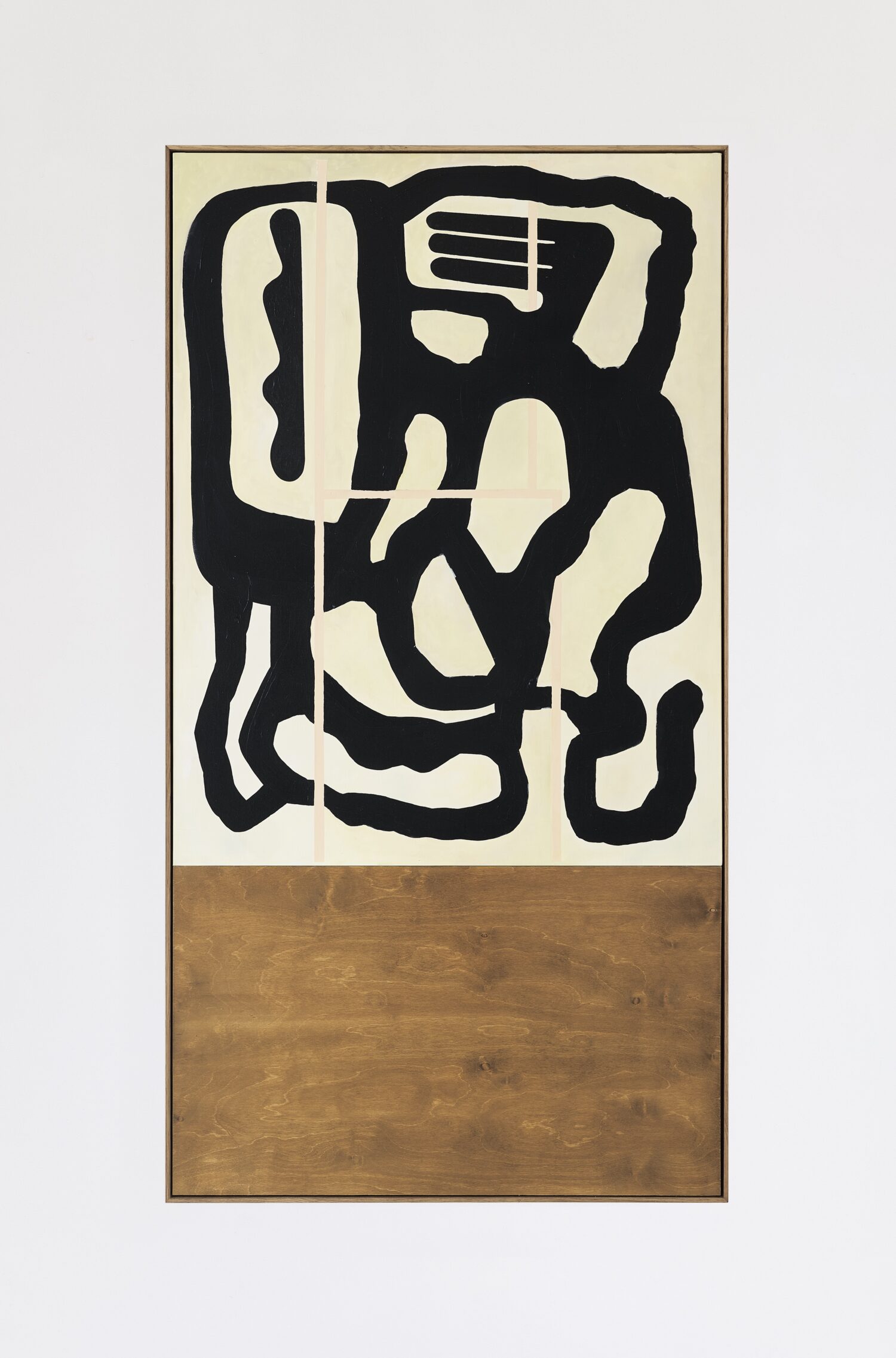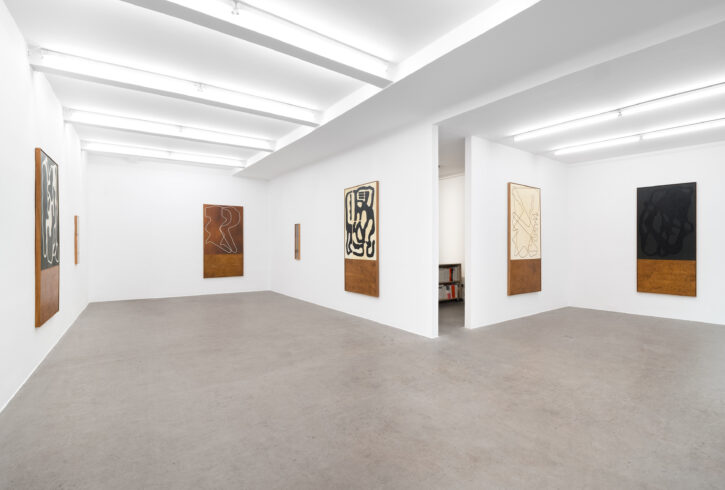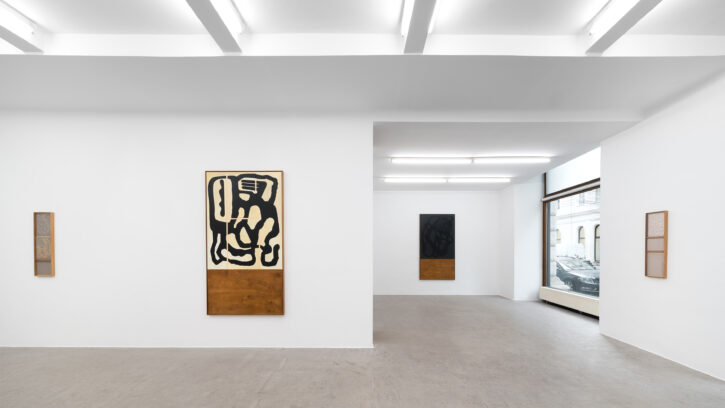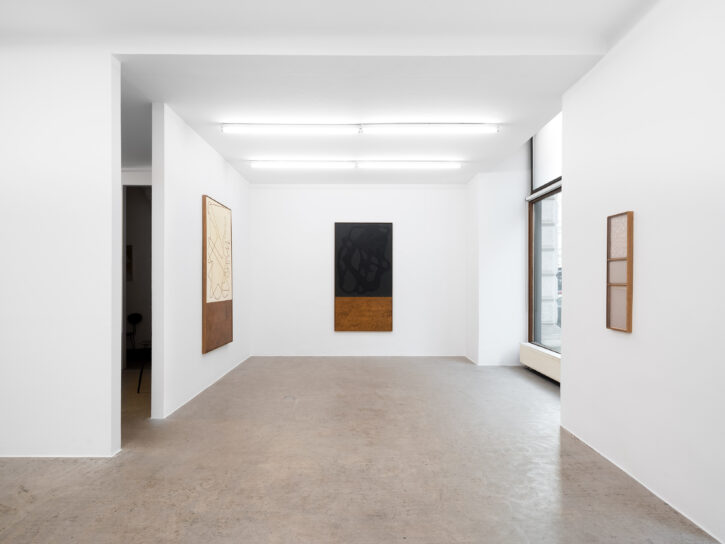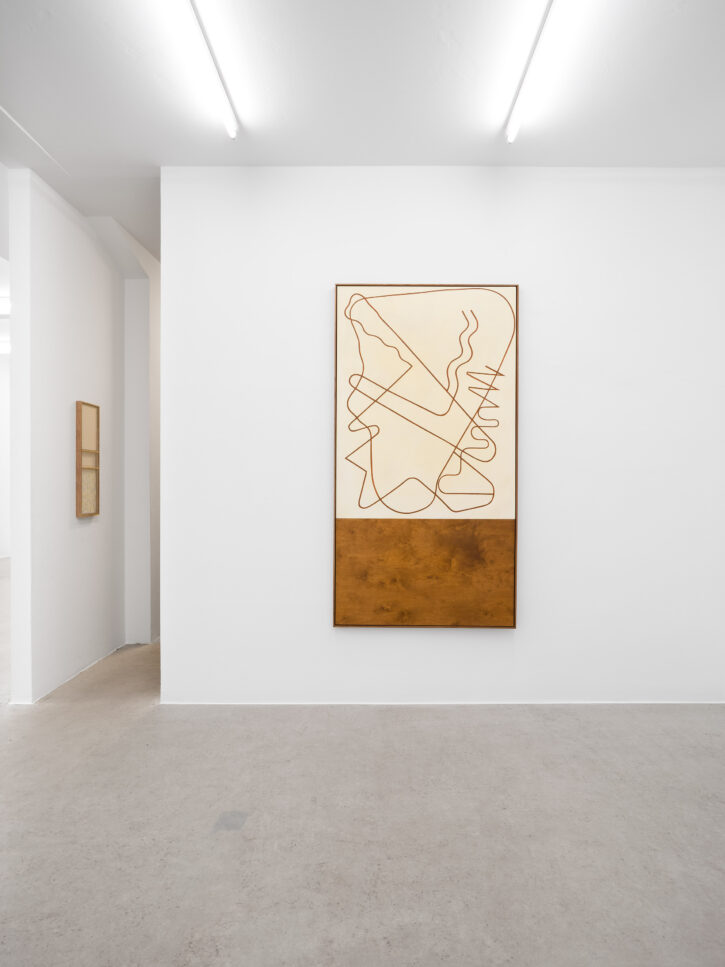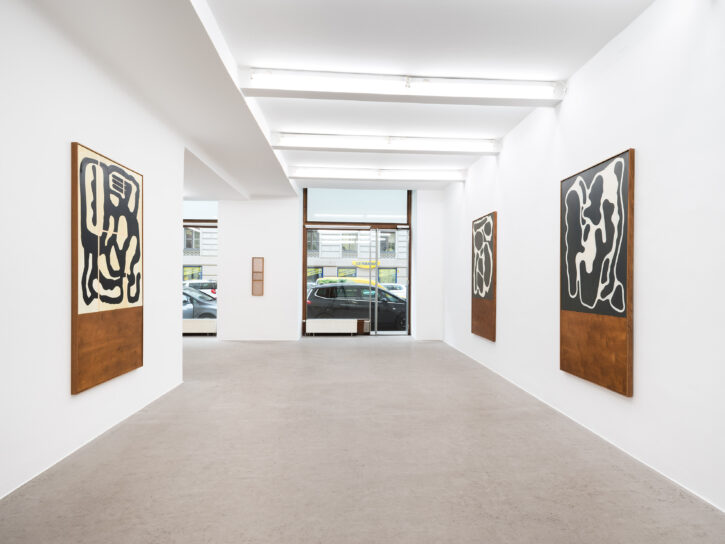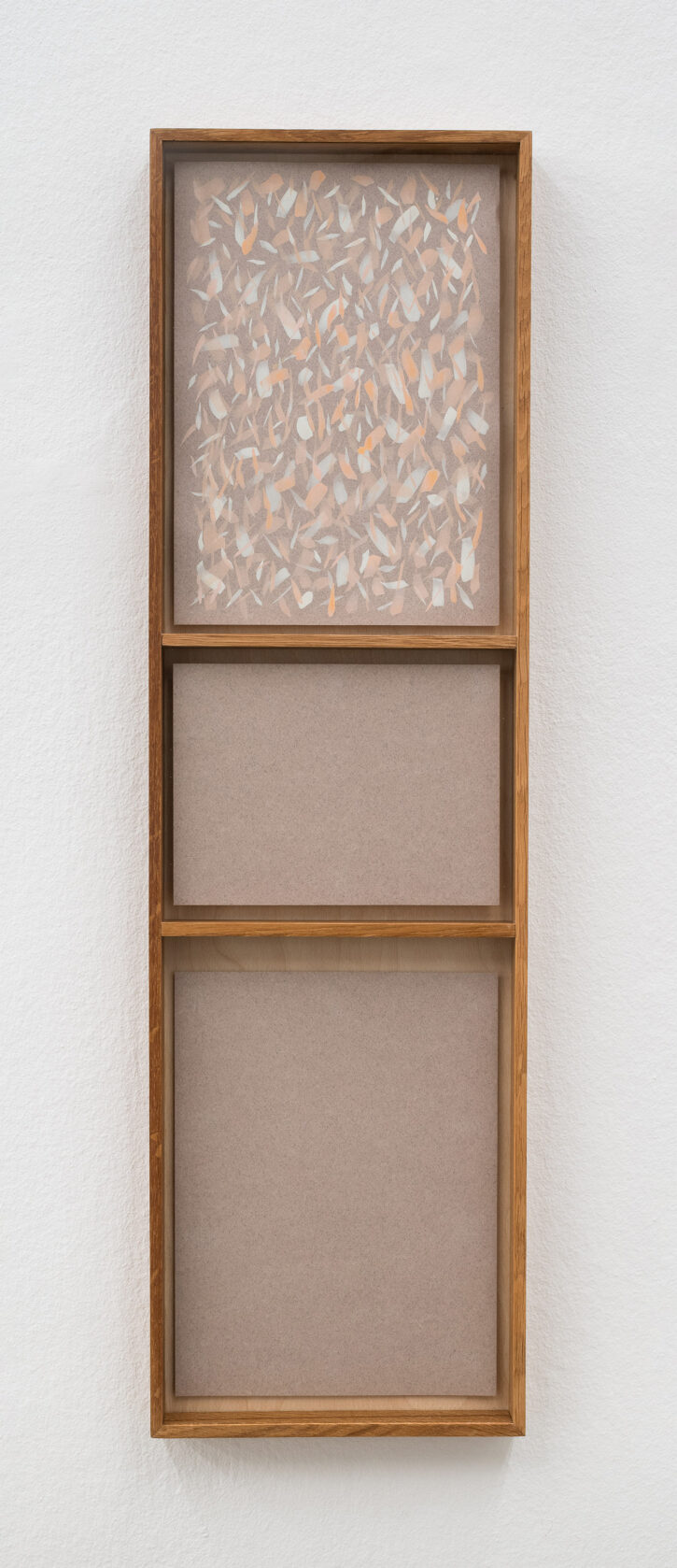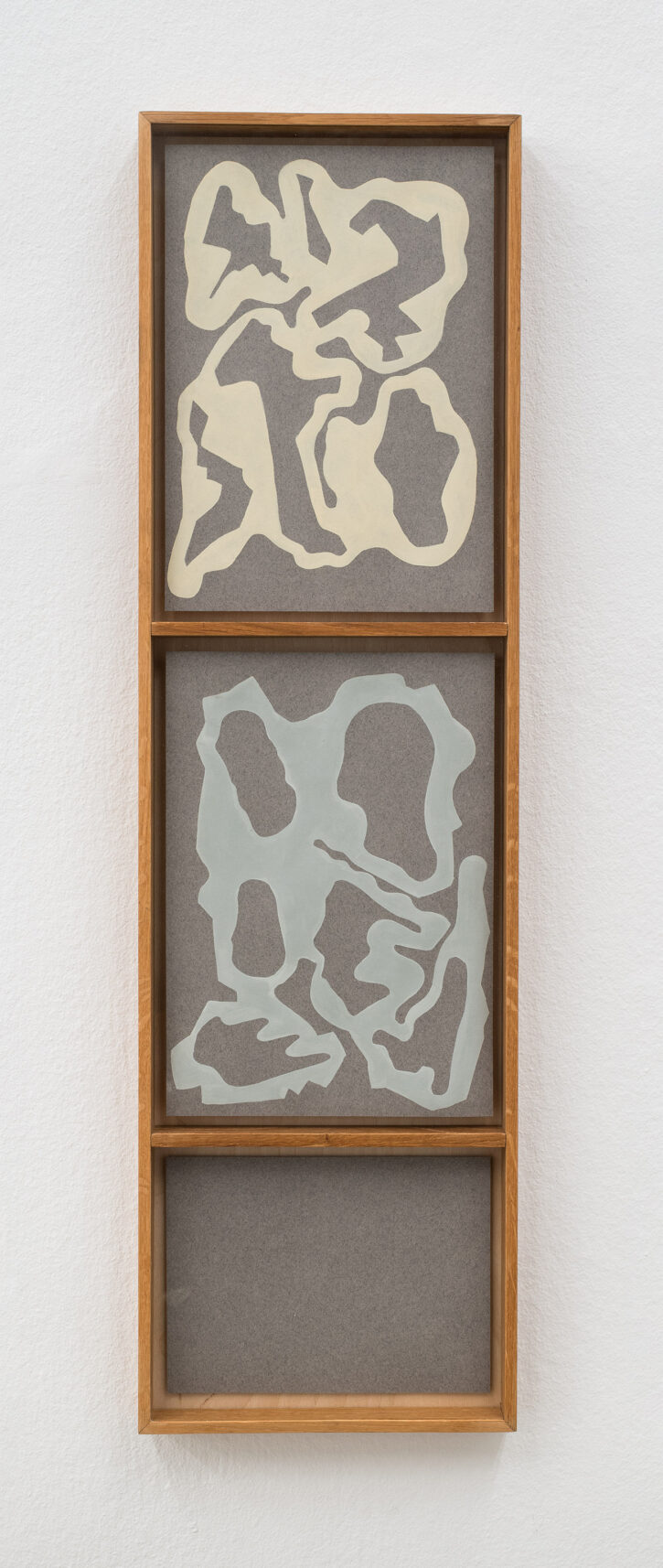Sebastian Koch
About the exhibition
samtgazewarm
ums kniefell
gehuscht
abermuls
schwarzluft
von
treppeneck
und
granitstrickschleppe
zehenspitzt
buttermilchgleich gelegt
und
sich mit
bühnenwachsrußgeruch
den schnabel
reibend
…
zen
elgzwölg
ein möglicher wurf
(Sebastian Koch)
In his current exhibition immernochts at Galerie Krobath, Vienna, Sebastian Koch (*1986, Vorarlberg) explores the intersections of painting, sculpture, and printmaking, creating hybrid image-objects composed of canvas and wood. His works take shape as spatial formations in which materiality and form remain in a state of continuous, dynamic balance.
Koch’s practice is defined by a distinctive formal language, expressed through his precise articulation of line on canvas. His work draws from the vocabulary of 20th-century geometric abstraction while simultaneously expanding beyond conventional strategies of visualization. Whereas the dominance of linear structures characterized earlier works, his recent pieces shift the focus towards surface, layering, and the subtle interplay of color fields. What at first appears as a monochrome background is, in fact, a shifting field of nuanced tonal variations, creating a sense of depth that enters into a finely tuned tension with the structures laid atop it.
The works in this exhibition reflect a considered yet playful engagement with art-historical references, embracing an open and at times humorous approach to appropriation. Koch references figures such as Hans Arp and Sophie Taeuber- Arp, whose organic-dynamic formal language positions movement as a central principle. At the same time, he subtly subverts the canonized ‘genius gesture’ of modernism, as epitomized by artists like Picasso or Miró. Here signatures, for instance, function both as an affirmative act of artistic authorship and as a casual, almost automated gesture— oscillating between self-assertion and choreographed repetition, a motif that recurs throughout his work. The limits of the image and its framing also come into focus. Where does a painting end? Is the frame a definitive boundary, or merely another formal construct? Does radical minimalism signify absolute reduction, or is it merely a detour back into composition? By deliberately leaving these questions unresolved, Koch resists clear classification, instead opening a space for critical reflection.
Materiality remains central to this exploration: Plywood, stained and coated with shellac, undergoes subtle material interventions that shift its perception, generating new aesthetic and conceptual value. In this way, Koch stages a layered dialogue between gestural painting and precise composition, between industrially inflected materials and a delicately attuned artistic sensibility. His works question the very limits of artistic intervention: Where does art begin, and when does a process remain ephemeral, incidental? What role does ornamentation or transience play—for instance, the unconscious doodle as part of a serious search for form? By intertwining constructive principles with painterly elements, Koch creates objects that oscillate between image and spatial body. Within this tension, he not only examines the threshold between surface and volume but also considers the possibility of image-space as a site of dynamic thought processes.
Here Collage functions not only as a visual but also as a linguistic method: Fragments of language are combined, distorted, and incorporated as atmospheric interventions within the work. Koch navigates tension between spontaneity and compositional intent, between intuitive gesture and deliberate positioning. Here, art is neither political or religious manifesto nor purely intellectual construct—it is an existential act, a process continuously reshaped between intuition and structure, reflection and immediacy.
(Text: Livia Klein)
Further informations:

werfkurbling, 2024
Öl auf Leinwand, Sperrholz, Beize, Schellack / oil on canvas, stain, shellac, 190 x 100 cm Unikat/ unique
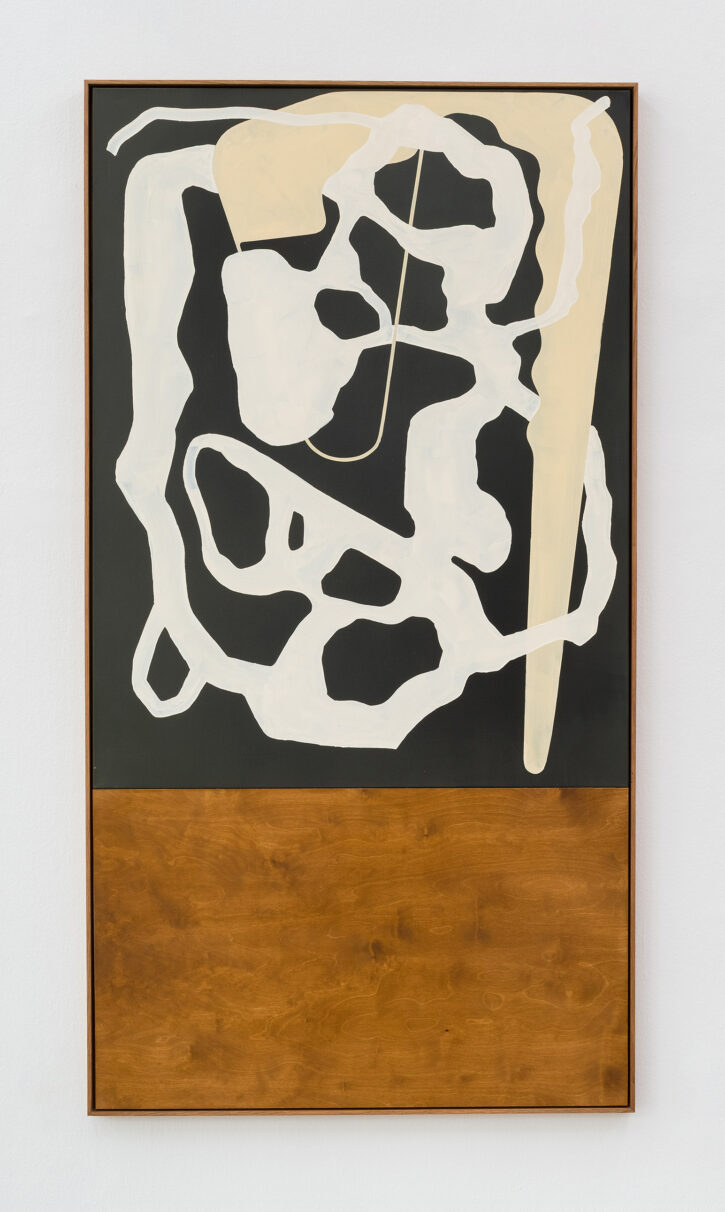
armgelbler, 2024
Öl auf Leinwand, Spoerrholz, Beize, Schellack / oil on canvas, stain, shellac. 190 x 100 cm. Unikat / unique
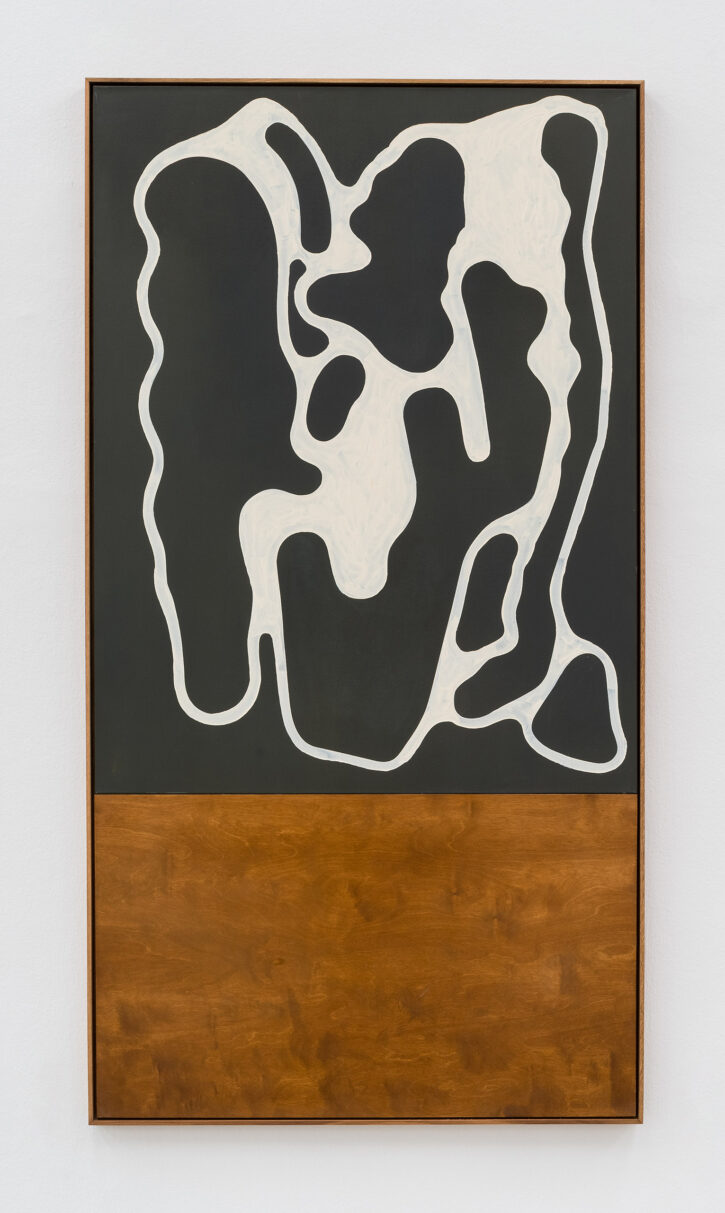
auffalbung II, 2024
Öl auf Leinwand, Spoerrholz, Beize, Schellack / oil on canvas, stain, shellac. 190 x 100 cm. Unikat / unique

werghelfling, 2024
Öl auf Leinwand, Spoerrholz, Beize, Schellack / oil on canvas, stain, shellac. 190 x 100 cm. Unikat / unique

auffalbung I, 2024
Öl auf Leinwand, Spoerrholz, Beize, Schellack / oil on canvas, stain, shellac. 190 x 100 cm. Unikat / unique
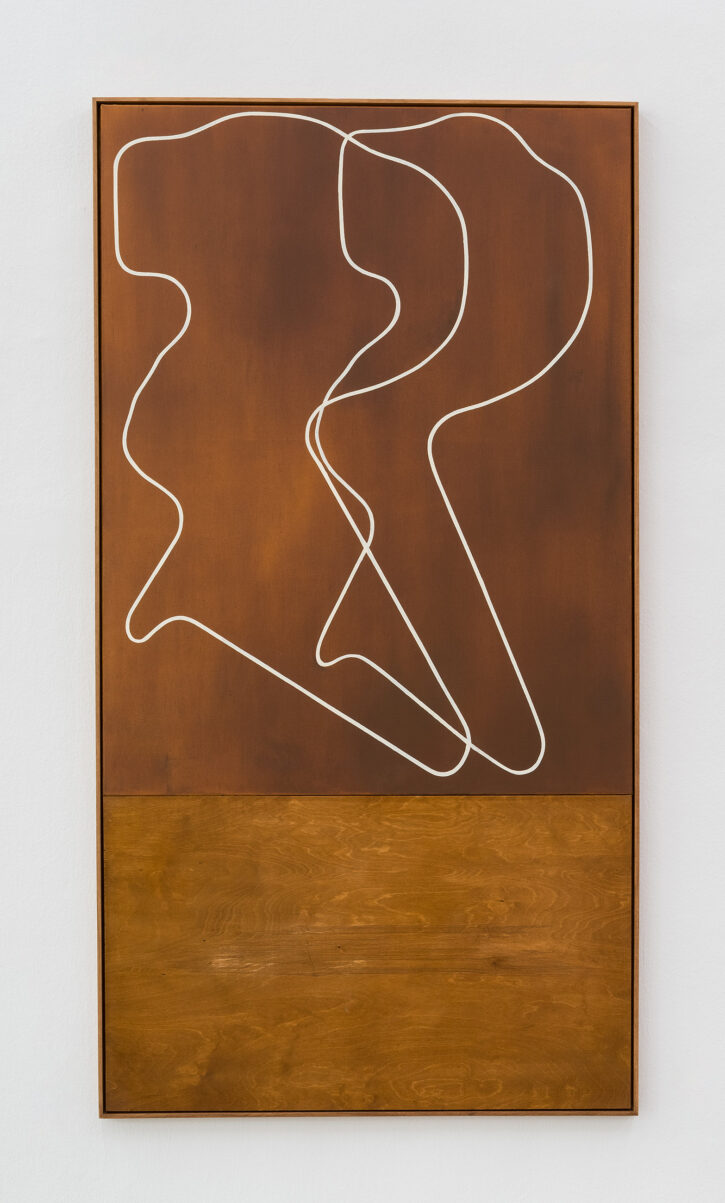
zwifilmler, 2024
Öl auf Leinwand, Spoerrholz, Beize, Schellack / oil on canvas, stain, shellac. 190 x 100 cm. Unikat / unique
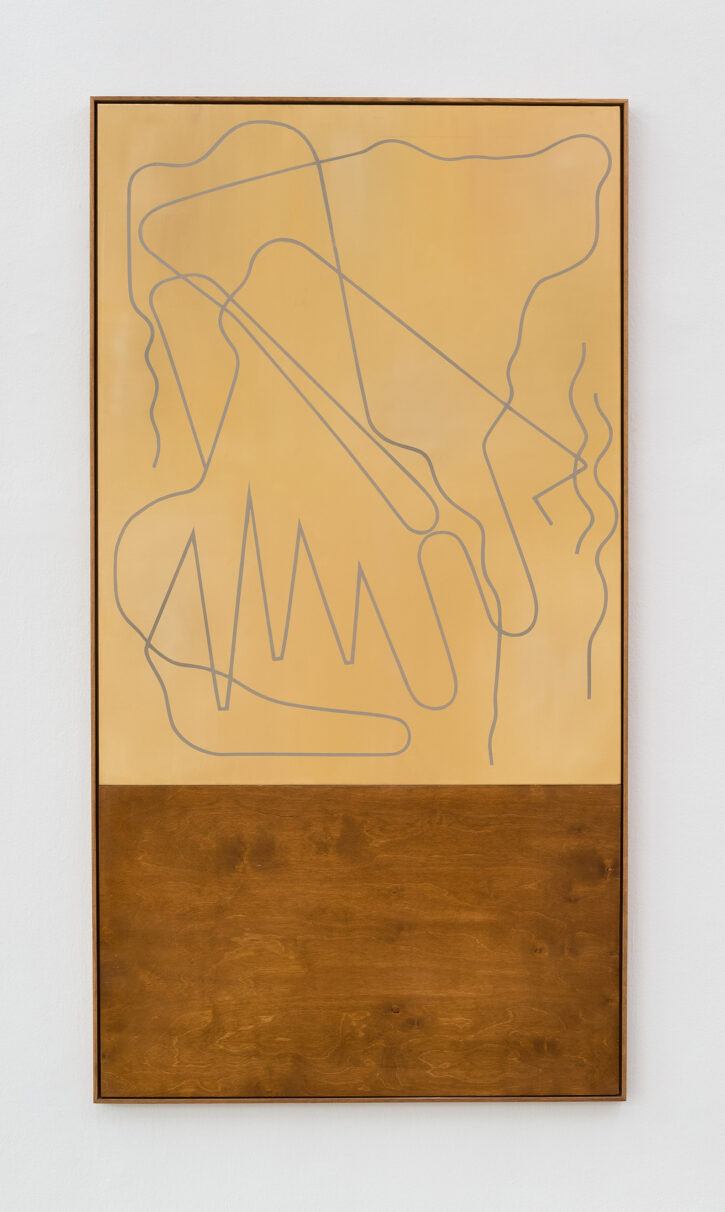
quart-ziegung II, 2024
Öl auf Leinwand, Spoerrholz, Beize, Schellack / oil on canvas, stain, shellac. 190 x 100 cm. Unikat / unique
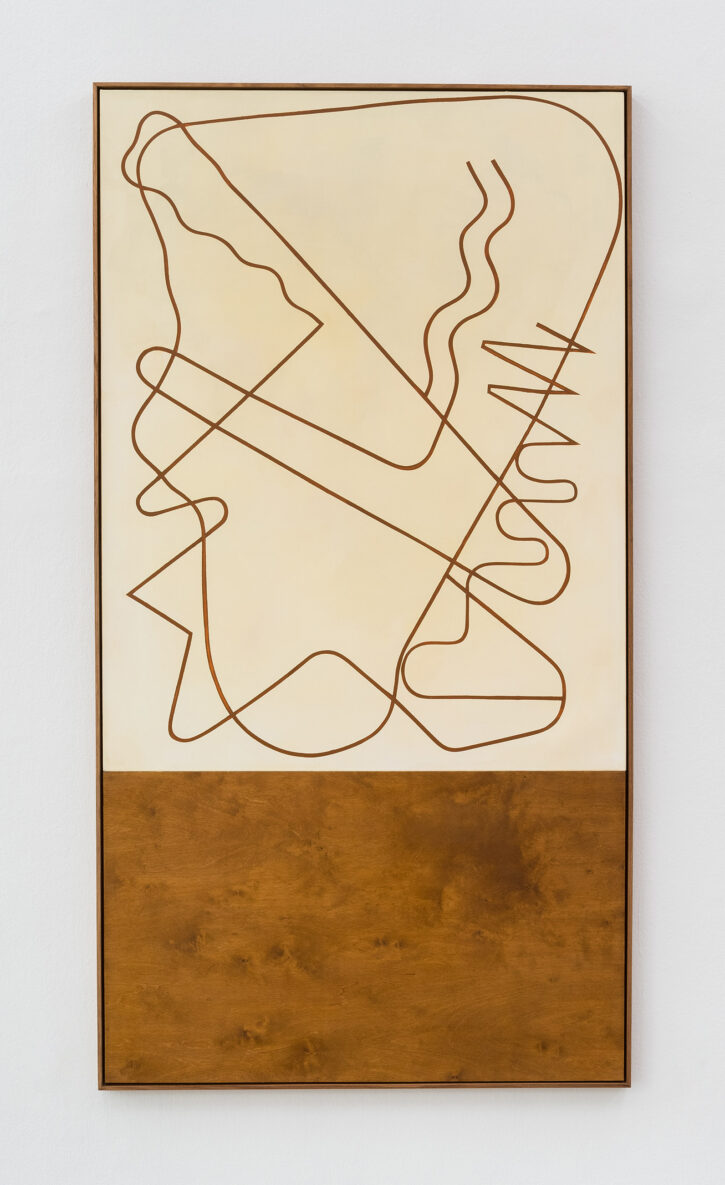
quart-ziegung I, 2024
Öl auf Leinwand, Spoerrholz, Beize, Schellack / oil on canvas, stain, shellac. 190 x 100 cm. Unikat / unique
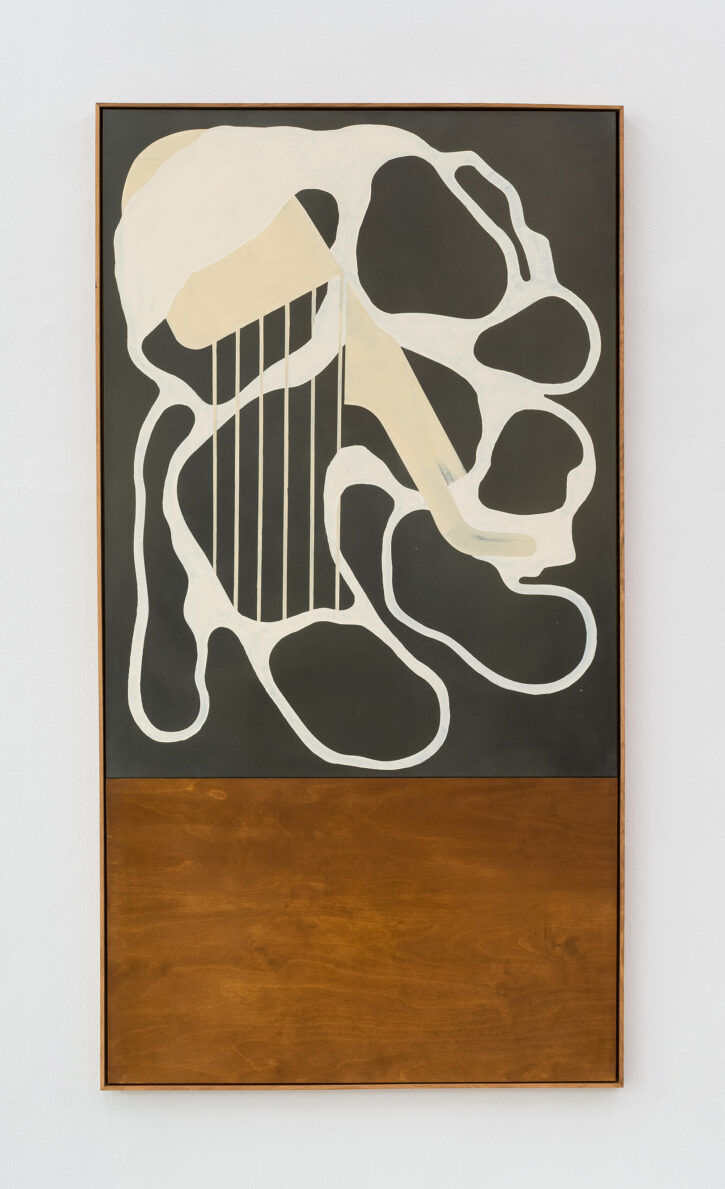
globkopfler, 2024
Öl auf Leinwand, Spoerrholz, Beize, Schellack / oil on canvas, stain, shellac. 190 x 100 cm. Unikat / unique

tonfalbung, 2024
Öl auf Leinwand, Spoerrholz, Beize, Schellack / oil on canvas, stain, shellac. 190 x 100 cm. Unikat / unique

O.T., 2024
Abtönfarbe auf Papier, Holz, Glas /
Tinting colour, wood, glass. 86 x 24 cm. Unikat / unique.
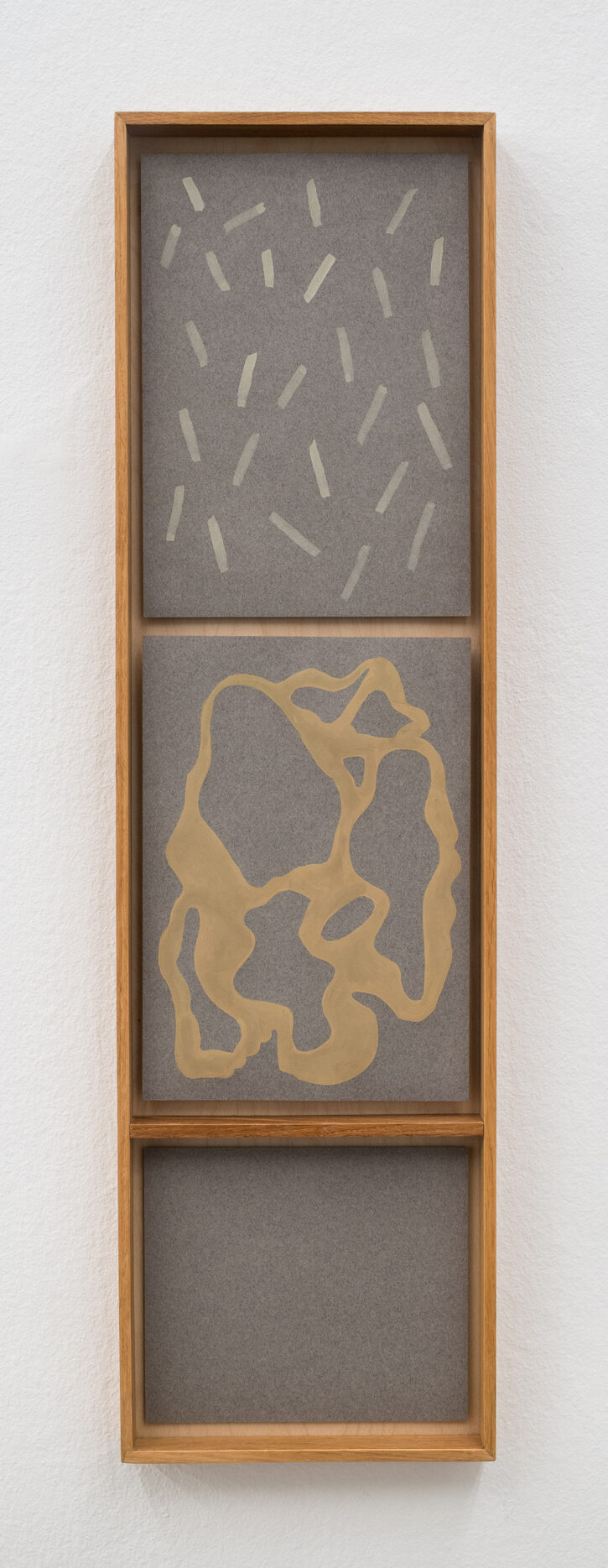
O.T., 2024
Abtönfarbe auf Papier, Holz, Glas /
Tinting colour, wood, glass. 86 x 24 cm. Unikat / unique.
